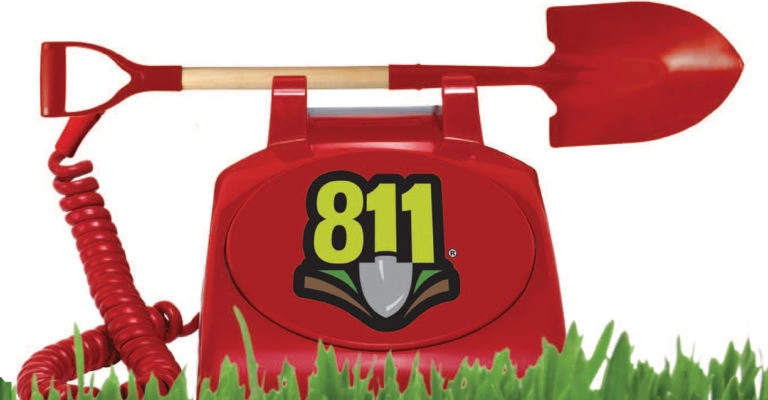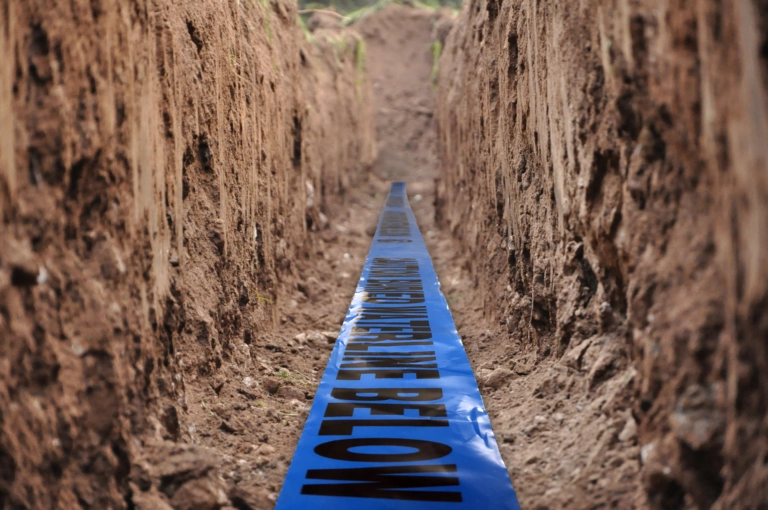Call Before You Dig
Did you know that planting trees and simple installation of mailboxes and decks can all lead to life-threatening injuries – all that could have been prevented by a quick phone call? If you strike a line, you are at risk of injury, paying repair costs, paying fines, and inconvenient outages. Regardless of the size of the project, small or large, a smart worker calls 811 to ensure they complete their project correctly. The depth of utility lines can vary for many reasons, such as erosion, previous digging projects, and uneven surfaces. If Utility lines are not correctly marked, there is a risk of striking an underground utility line, and it doesn’t matter if you’re only digging down a few inches.3On August 11th, Presco, America’s premier manufacturer of safety marking products, is reminding everyone about the preventative emergency resource hotline 811.
What is 811
811 is the phone number the public should call before digging to prevent the damage of unintentionally hitting underground utility lines. Beneath the surface of our planet, there are millions of miles of buried utility lines that are crucial to everyday living like water, electricity and natural gas.2811 is the federally designated call-before-you-dig number that helps homeowners and professionals avoid damaging these critical utilities. When one makes the free call to 811 a few days before digging, injury and damage to property, utility service outages to the entire neighborhood, and potential fines and repair costs are avoided. Call 811 from anywhere in the country a few days before digging and the call will automatically route to your local one-call center.2The operator will ask for contact information and digging plans, with the conversation only lasting a few minutes. Utility companies who have potential facilities in the area of the dig site will be notified. Each affected utility company will send a locator to mark the approximate location of the underground utility lines, and this typically occurs within 2-3 working days.
Calling Is Simple
It is important to remember the 811 processes. See below for the proper steps to an 811 process.1
- Notify the local one-call center by calling 811 or making an online request 2-3 day before work begins. You should check our state map to find out how far in advance you need to call.
- Wait the necessary amount of time for affected utility operators to reply to your request.
- Confirm that all affected utility operators have responded to your request and marked underground utilities. Be sure to respect the marks.
- Finally, dig around the marks with care. This simple process is going to prevent the numerous amounts of damage that happens every year. It is essential to respect the existing underground utility lines because they are essential for telecommunication, electricity distribution, natural gas, cable television, fiber optics, traffic lights, street lights, storm drains, water mains, and wastewater pipes. Damage to this infrastructure can be dangerous.
811 not 911
Presco hopes that everyone calls 811 to avoid an emergency, instead of calling 911 in a life-threatening situation. Presco focuses on safety with its manufacturing of many safety marking fproducts. Learn more about Presco’s products at http://www.presco.com/

- 811 Campaign | Common Ground Alliance. (n.d.). Retrieved from http://commongroundalliance.com/damage-prevention/toolkits/811-campaign
- How 811 works. (n.d.). Retrieved from http://call811.com/before-you-dig/how-811-works
Read more at presco.com










